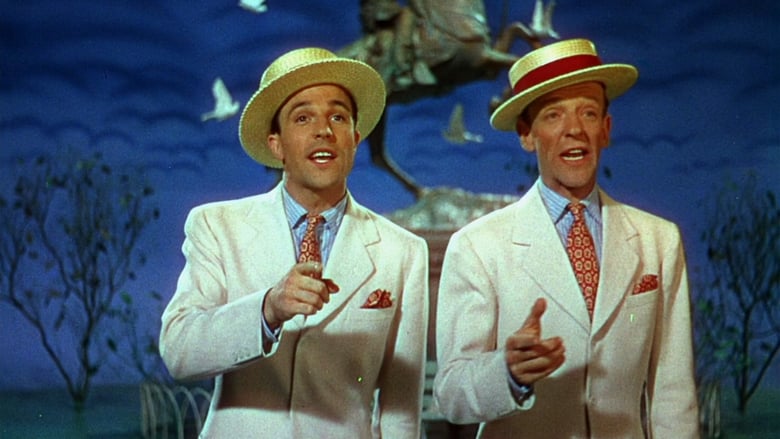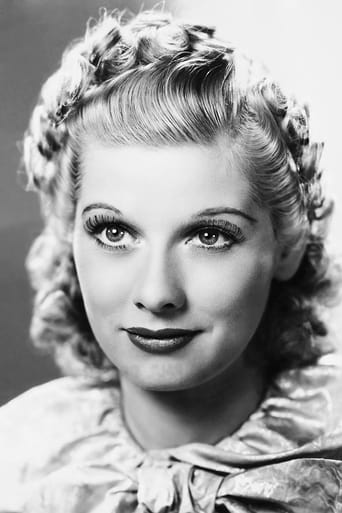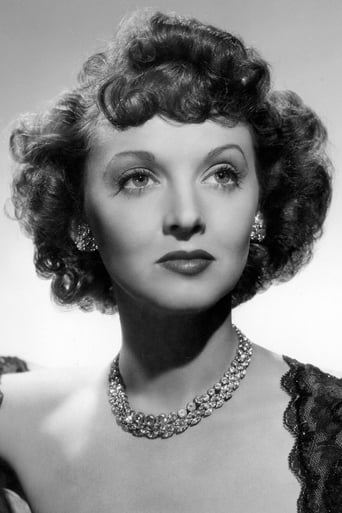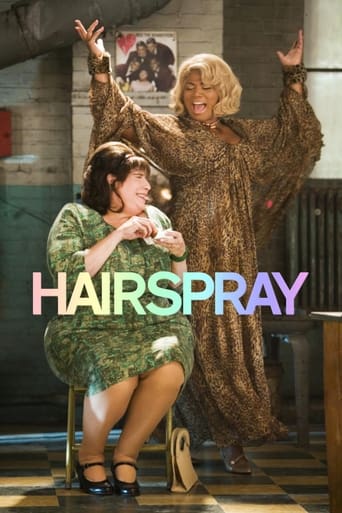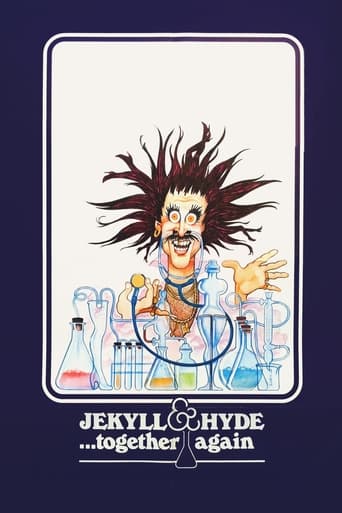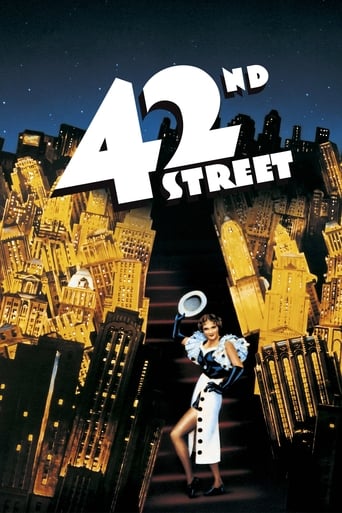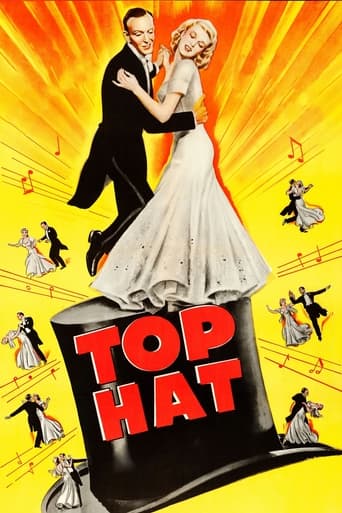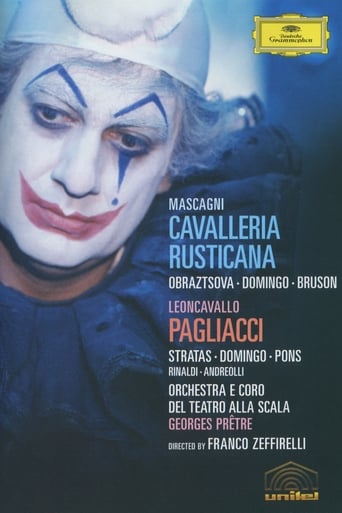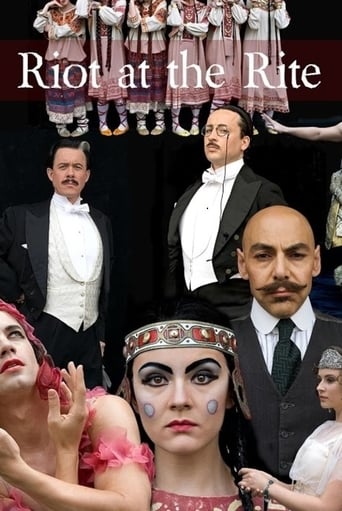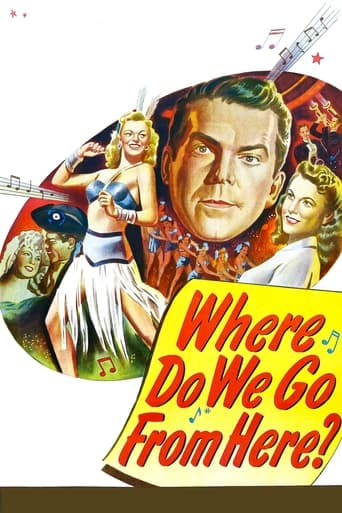Ziegfeld Follies (1945)
The late, great impresario Florenz Ziegfeld looks down from heaven and ordains a new revue in his grand old style.
Watch Trailer
Cast


Similar titles
Reviews
To me, this movie is perfection.
Just what I expected
It’s not bad or unwatchable but despite the amplitude of the spectacle, the end result is underwhelming.
This is one of the best movies I’ve seen in a very long time. You have to go and see this on the big screen.
MGM Technicolor musical, light on plot but big on music and comedy. It's a sort of spiritual sequel to The Great Ziegfeld, with William Powell reprising his role from that biopic as Florenz Ziegfeld. Up in Heaven, Ziegfeld looks down on Earth and reminisces (through stop motion puppetry!) about his Follies. Then he wonders what kind of show he could produce if he had access to MGM's stable of stars. From there we get nearly two hours of routines featuring these stars doing musical numbers and comedy skits. I won't bother to list all the talent or numbers. The best are Virginia O'Brien's man-crazy number, Esther Williams swimming, all the Astaire numbers (including Limehouse Blues in yellowface, beautifully staged regardless of controversy), and Judy Garland's fun "The Great Lady Has an Interview." The best musical number of them all is easily "The Babbitt And The Bromide" with Fred Astaire and Gene Kelly. The worst is probably Lena Horne's forgettable piece. The comedy skits are all pretty corny. I didn't laugh once. The main reason to see this, besides the stars and the tunes, is that it's a beautiful-looking picture, filmed in glorious Technicolor with lovely costumes and sets. A visual delight with some fine musical numbers. Just don't get hung up on the lack of plot.
This is one of the films that was great in its time, but doesn't hold up well. Not because the performances aren't great -- they are. But most of us go to a film to see a particular movie star or two, and here you have to sit through well over a dozen stars performing specialty numbers just to get to the particular stars you want to see. Nevertheless, this film does provide us with an opportunity to see some of the great MGM stars of the mid-1940s.The film opens with William Powell reprising his role as Florence Ziegfeld...but this time in heaven. He's looking down thinking about how he would put together another extravaganza if he was still earth-bound. There's a clever claymation sequence with Powell reminiscing. And then he decides to open his new production with Fred Astaire with "Bring On Those Beautiful Girls" (which includes several stars, including a lovely Lucille Ball), which is a production number that I imagine the real Ziegfeld would have loved.There's an impressive water ballet by Esther Williams. Next up is an unfunny comedy segment about telephones with Keenan Wynn, who clearly was better is somewhat dramatic roles. The mostly forgotten comedy actor Victor Moore and character actor Edward Arnold do a mildly humorous skit, which seems to mostly be about lawyers and being jostled on the subway; it's a variation on a common burlesque routine (more frequently featuring a simpleton being egged on to make noise in a quiet zone). Free Astaire and Lucille Bremer do a wonderful dance number, which is odd in that he plays a jewel thief; the number is horribly over-orchestrated (a problem throughout the film). There is a comedy routine by Fanny Brice (and Hume Cronyn and William Frawley) about winning the Irish Sweepstakes; it is a rare opportunity to see the once immensely popular Fanny Brice ("Funny Girl"), a true Ziegfeld star. If you like Lena Horne, she does a beautifully staged number, although I found it to be rather racist. The highlight for many (including me) will be the Red Skelton performance entitled "When Television Comes", popularly known as "Guzzler's Gin"; this routine, more than any other, brought Skelton fame; however, it clearly shows one of the limitations of the film: this routine used to put audiences into hysterics, but here it plays rather flat without laughter and applause...and, this is supposed to be a stage show, so those 2 elements are missing, and putting those ingredients in would have made for a much more realistic experience. Another Fred Astaire number, Chinese-themed, is hardly his best dancing, but it is the most beautifully photographed and designed part of the film; the colors and textures are stunning; and it is unique. I didn't care for the Judy Garland number; it just seemed shallow. Fred Astaire is back AGAIN with a light-hearted dance number with Gene Kelly about their friendly competition.There are a couple of problems with this DVD. First, the film really needs to be restored, The colors are no longer true...for example, too much red in the skin tones.A second problem, at least for me, is that there is no plot. None at all. It's "just" a succession of musical and comedy numbers.Nevertheless, despite it faults, this is a rather remarkable film highlighting as it does the great MGM stars of the time. Ziegfeld would have been proud.
There is a lot of talent on display in Ziegfeld Follies, including some of MGM's finest, and while it is a very uneven film there's a lot to enjoy. Those expecting a good story or comedy that makes one laugh will be disappointed, but those who love great production values, even better music and dancing and some great performances will find a lot of pleasure.Ziegfeld Follies is practically plot less(being more of a comedy and musical revue and nothing else), and does suffer from some uneven pacing. Most of the time the film zips along nicely, but some segments like Love and the La Traviata segment I wish were longer(lovely, beautifully performed scenes but too short) and a lot of the comedy sketches do go on for too long, which sags the pacing. Most of the comedy scenes don't work, with the exceptions of the amusing if slightly over-the-top Fanny Brice sketch and Pay the Two Dollars. Keenan Wynn's however is grating and embarrassingly out of place and Red Skelton's is a little overplayed and goes on for too long.However, the Technicolor is glorious and the costumes and sets dazzling in rich colour. Limehouse Blues and especially This Heart of Mine, with its beautiful framing, are particularly strong in this regard. The film is very charming and was clearly done with a lot of heart and affection, and while it's uneven a lot of it entertains. It's solidly directed, the songs are spirit-rousing and exquisitely beautiful, Love and This Heart of Mine being the standouts. The choreography has a lot of energy and very accomplished in moves and execution. Esther Williams' water ballet while not one of the film's most memorable moments is very nicely done, but the heart-stopping Pas De Deux for This Heart of Mine and the amazing energy of The Babbitt and the Bromide.Of the numbers, while Limehouse Blues was fun, Lucille Ball's number was interesting and Ball is more tolerable than usual and Love was beautiful, three stood out. One was Judy Garland's very witty The Great Lady has an Interview, which shows that Garland had some good comedy acting chops. Two was The Babbit and the Bromide, interesting for being the first time for Fred Astaire and Gene Kelly to dance together, and while it doesn't see either man at their best it's a superbly danced and exuberant routine. The third one, and my personal favourite, is the heavenly This Heart of Mine, a perfect marriage of visuals, music and dancing.In conclusion, patchy, with the lack of story, uneven pacing and flat comedy, but very enjoyable, thanks to how good it looks and sounds and how well it's performed on the most part. Not a must see, but definitely worth a look at least once. 7/10 Bethany Cox
I have enjoyed reading the various postings about this movie, but found it somewhat depressing to find so many viewers have been obviously conditioned by present day "standards of talent." (and by that I mean there is no one today to fill the shoes of these musical giants). Speaking for myself, this was quite an amazing achievement in the form it was meant to be -- a "Review" -- not a musical with a storyline -- and I think it is only fair to judge it on those terms, rather than what you wished it would be. My opinion: most of the comedy numbers were OK, but one should remember that these numbers were directed at a 1946 audience, who appreciated this kind of gentle humor more than present day viewers. As for the musical numbers -- I don't think MGM ever mounted anything as lavish and, in particular, "This Heart of Mine". One posting said the storyline didn't make any sense (it certainly did to me), and more than one decried the inadequacy of Lucille Bremer as a dancer. Lucille Bremer was not only beautiful, but was an excellent dancer and for me, they were perfect together. "Limehouse Blues" (filmed on the "Dorian Gray" set) is one for the history books. Judy Garland looked beautiful and, in an early example, showed what a terrific range she possessed. The Technicolor was magnificent. By the way, contrary to what was posted, this was one of MGM's highest grosses of he 1940s.


